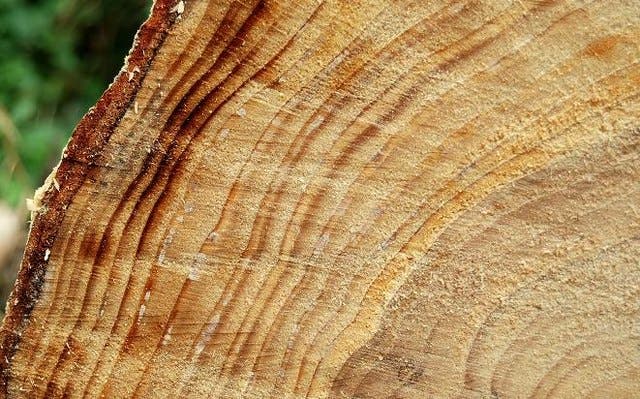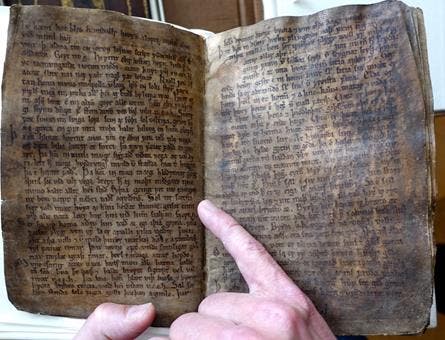What do a volcanic eruption, a medieval poem, and a conversion to Christianity have in common? Well apparently, in Iceland — a lot.

The Eldgjá volcano holds two records. It features the largest volcanic canyon in the world, some 40 km long, 270 m deep and 600 m wide at its greatest, and it also boasts the largest flood basalt in historic time, with an estimated 18 km3 of magma poured out of the earth, covering around 800 km2.
A multidisciplinary team of scientists has used information from ice cores and tree rings to date this violent eruption, which took place around the spring of 939 and continued at least through the autumn of 940 — shortly after the island was colonized by Vikings an Celts.
The eruption must have had a tremendous impact on these early settlers. Lava floods are rare and spectacular eruptions, in which huge flows of lava engulf the landscape, destroying everything in its path.
“This places the eruption squarely within the experience of the first two or three generations of Iceland’s settlers,” said first author Dr Clive Oppenheimer of Cambridge’s Department of Geography. “Some of the first wave of migrants to Iceland, brought over as children, may well have witnessed the eruption.”
But the team wasn’t interested just in studying the eruption — they wanted to see what effect it had on people in Iceland and beyond. They found that a haze of sulfurous dust spread over parts of Europe, resulting in an exceptionally blood-red and weakened Sun in Irish, German and Italian chronicles of the time.
More tangibly, the eruption also caused a reduction in global temperatures, which was revealed by studies on tree rings. The evidence contained in the tree rings suggests the eruption triggered an extremely cold summer, one of the coldest in 1,500 years.
“In 940, summer cooling was most pronounced in Central Europe, Scandinavia, the Canadian Rockies, Alaska and Central Asia, with summer average temperatures 2°C lower,” said co-author Professor Markus Stoffel from the University of Geneva’s Department of Earth Sciences.

[panel style=”panel-success” title=”Dendrochronology” footer=””]Dendrochronology is the study of tree rings. As is common knowledge, many trees grow ‘rings’ each year. This can not only be used to date certain events, but also infer how if those years have been particularly hot, cold, dry, or wet.[/panel]
This had devastating effects, mostly on people in Iceland, but also for people all around the world. The volcano eruption shifted weather patterns, causing a harsh winter and destroying crops in many places.
“It was a massive eruption, but we were still amazed just how abundant the historical evidence is for the eruption’s consequences,” said co-author Dr Tim Newfield, from Georgetown University’s Departments of History and Biology. “Human suffering in the wake of Eldgjá was widespread. From northern Europe to northern China, people experienced long, hard winters and severe spring-summer drought. Locust infestations and livestock mortalities occurred. Famine did not set in everywhere, but in the early 940s we read of starvation and vast mortality in parts of Germany, Iraq and China.”
Interestingly, this dramatic eruption might have had another effect in Iceland: it brought it closer to Christianity. Iceland’s Christianization began in 999 and was formalized sometime in the 11th century. Iceland’s most celebrated medieval poem, Vǫluspá (‘The prophecy of the seeress’), which can be dated as far as 961, tells a story about the end of Iceland’s pagan gods and the coming of a new age: the age of a single god.

In the poem, the seeress prophesies the destruction of the gods, with fire and flood overwhelming heaven and earth and the gods fighting their final battles. This is the “fate of the gods” — Ragnarök. What researchers found is that the poem seems to be describing the eruption. Here are some translated lyrics:
“The sun starts to turn black, land sinks into sea; the bright stars scatter from the sky.
Steam spurts up with what nourishes life, flame flies high against heaven itself.”
All that might seem circumstantial (after all, they are common themes), but it is very reminiscent of an eruption. The poem goes further, talking about cold weather — and in Norse mythology, Ragnarök itself is followed by a very cold weather, reminiscent of a volcanic or a nuclear winter.
“With a firm date for the eruption, many entries in medieval chronicles snap into place as likely consequences – sightings in Europe of an extraordinary atmospheric haze; severe winters; and cold summers, poor harvests; and food shortages,” said Oppenheimer. “But most striking is the almost eyewitness style in which the eruption is depicted in Vǫluspá. The poem’s interpretation as a prophecy of the end of the pagan gods and their replacement by the one, singular god, suggests that memories of this terrible volcanic eruption were purposefully provoked to stimulate the Christianisation of Iceland.”
Journal Reference: Clive Oppenheimer et al “The Eldgjá eruption: timing, long-range impacts and influence on the Christianisation of Iceland” Climatic Change (2018). DOI: 10.1007/s10584-018-2171-9.


